by Dr. Talia Marcheggiani, ND | Jan 3, 2015 | Gratitude, Health, Holidays, Medicine, Mindfulness, NPLEX, Professional Development, Relationships, Volunteering
2014 has been a year of beginnings and endings. I ended two major relationships: one with the school I went to for 4 years and another with a long-term boyfriend, and began two new ones: I embarked on my own career as a naturopathic doctor and started a new relationship. The past year for me represents the tail end of several important life-cycles and the promise of exciting new beginnings.
It was the year I turned 28, starting a new 7-year karmic cycle. I broke up with my now ex-boyfriend of 5 years and finished my studies at the Canadian College of Naturopathic Medicine. I dedicated a large portion of my time to social activities, self-expansion and personal growth. I got out into the world and made new friends while strengthening old friendships. I became a little more daring and a lot more open. These changes helped groom me into a better doctor.
I spent the summer working, dating and studying for NPLEX II. I embraced new opportunities and made many new friends with co-workers, ex-classmates and complete strangers. I became more artistic.
I went to India in August and September after finishing NPLEX II. After 4 years of constantly doing, it felt wonderful to relax into the chaos of India and become an observer for a month. Simply being felt foreign and very uncomfortable at times, but also balancing. I relished the long train rides, the heat and the variety of cultures, smells and colours – especially the food. India contains a furious energy about it. It was a wonderful experience and a brilliant way to open myself up further to new experiences while exploring a different corner of the world.
When I arrived home from India I was ecstatic to find that I had passed NPLEX II and my Ontario board exams. I applied for my naturopathic licence and began looking for clinic spaces. When I met Heather Osler at the Bloor West Homeopathic & Wellness Clinic, I immediately knew that the space was an excellent fit. So far, I’ve been right. The calming, healing energy of the space and the wonderful staff have been amazing. I have been blessed with a practice that has been slowly and steadily building from my first week. I am grateful for the wonderful patients that have booked with me in 2014. I have learned a lot from them and have had the opportunity to help them feel better, something that I love to do.
2015 brings with it the promise of more successes in private practice as I grow my existing patient base and eventually add more practice days to my week. I look forward to connecting with my ex-classmates and new colleagues, to giving talks and writing blogs and connecting with the community. I will be taking a course in Motivational Interviewing (MI) at OISE at the University of Toronto this January and February. I also hope to take more courses in psychological methods to strengthen my ability to treat mental health conditions; I plan to find ways to bring my love for art and writing to the therapeutic experience.
I have the opportunity to volunteer 1-2 days a month at the Yonge Street Mission health clinic and am looking forward to spreading naturopathic medicine to the community, a passion of mine. Between my private practice and volunteer work, I hope to quickly expand the number of people I help with naturopathic medicine.
2015 will bring with it creativity, in the form of exciting new writing projects and an effort on my part to make time for painting and consuming art.
I hope 2015 will be a year of love, bringing with it more fulfilling relationships and the opportunity to strengthen my existing ones with friends, my significant other, my family and, of course, my Colombian yorkie, Coco. I learn so much from my relationships and they remain the most important part of my life. They encourage me to grow and continue to challenge me to become a better person, writer and doctor. I hope to find mentors both inside and outside my profession that challenge me to continue to grow and provide me with needed guidance on my journey.
I plan to travel in 2015, to Puerto Rico, to visit the home of a dear friend and his growing family and back to Guatemala, to see my best friend in her tiny, bohemian village. I would also love to do a silent meditation retreat this year, finding more centring and balance.
I also know that 2015 will be about my own personal health. I have resolved to cut out sugar, drink more water and dedicate myself to becoming physically fitter by engaging in more yoga and strength training. I also resolve to strengthen my mindfulness practice and meditate more regularly, which I believe will help me become more conscious and present, both as a human and as a healthcare practitioner.
Most of all, I hope that 2015 will be about gratitude. As I become older, time seems to pass all the more quickly and I find this to be an alarmingly unpleasant realization. As a lifelong student and now a professional running her own business, I often find myself consumed by future goals, wants and needs, which interferes with my ability to live in the present moment, be reflective of and grateful for all the blessings I have been given in my life and currently enjoy. Dedicating myself to counting these blessings helps to anchor me to the present moment and feel happier with the wonderful life I’ve been given and the wonderful people who surround me.
2014 was an amazing year of transformation and growth. While Back to the Future II promised us a 2015 of flying cars and 80’s-style sneakers that automatically lace themselves, I believe the real 2015 will be an even better year filled with strength, opportunities for further growth and development and love. I hope to build more confidence and wisdom this year, develop more confidence in myself and add more stability to my life. 2015 will be about building strength and foundation.
I wish all of you the best this 2015. What are your reflections, hopes and resolutions for the coming year?
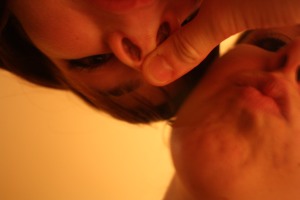
by Dr. Talia Marcheggiani, ND | Oct 6, 2014 | Canadian College of Naturopathic Medicine, Exams, NPLEX

The weekend before the Big Week is a time for serious contemplation.
1) Stimulate your Liver Qi. Embarrass yourself at grad formal. Have them reprint your award with the same word misspelled. Create an online dating profile. Get a day job and surround yourself by a species of human that is still trying to figure out what gluten is. Feel smugly superior and remember what this feels like: it won’t last.
2) Address the difference between neediness and having needs in relationships. Learn astrology.
3) Buy a $200 book that weighs more than you do and makes you feel legitimized by the medical profession. Carry it around as a cute accessory. Spill things on it so it looks used.
(more…)
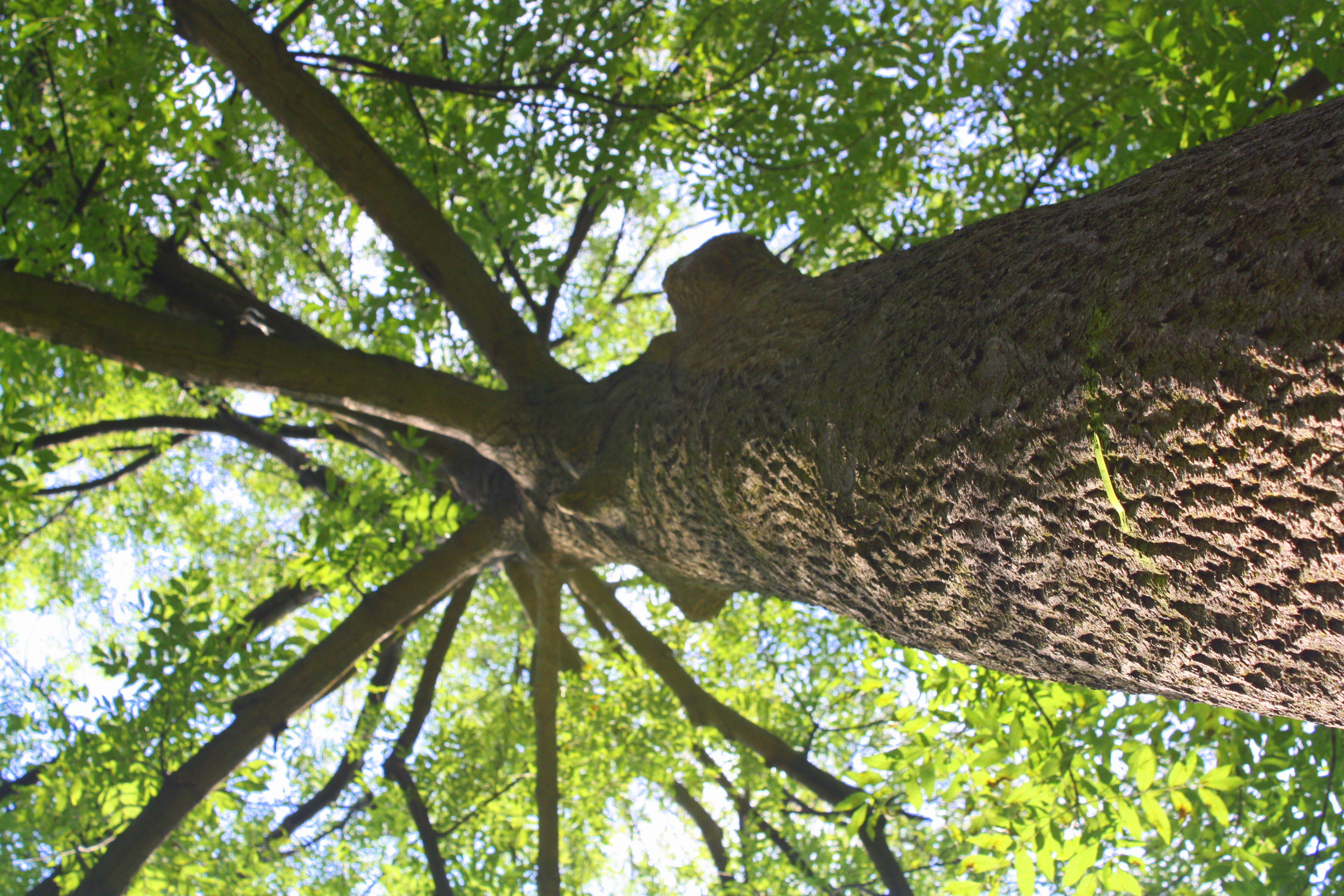
by Dr. Talia Marcheggiani, ND | Aug 4, 2014 | Canadian College of Naturopathic Medicine, Exams, Health, NPLEX, Robert Schad Naturopathic Clinic, Student, Summer

We are recycled star dust
That reshapes our entire body every 7 years.
Which means I’m just about finished with my 4th body.
And when I stare at the night sky, I might be looking at body number 5
Or reminiscing with the previous 3.
(more…)
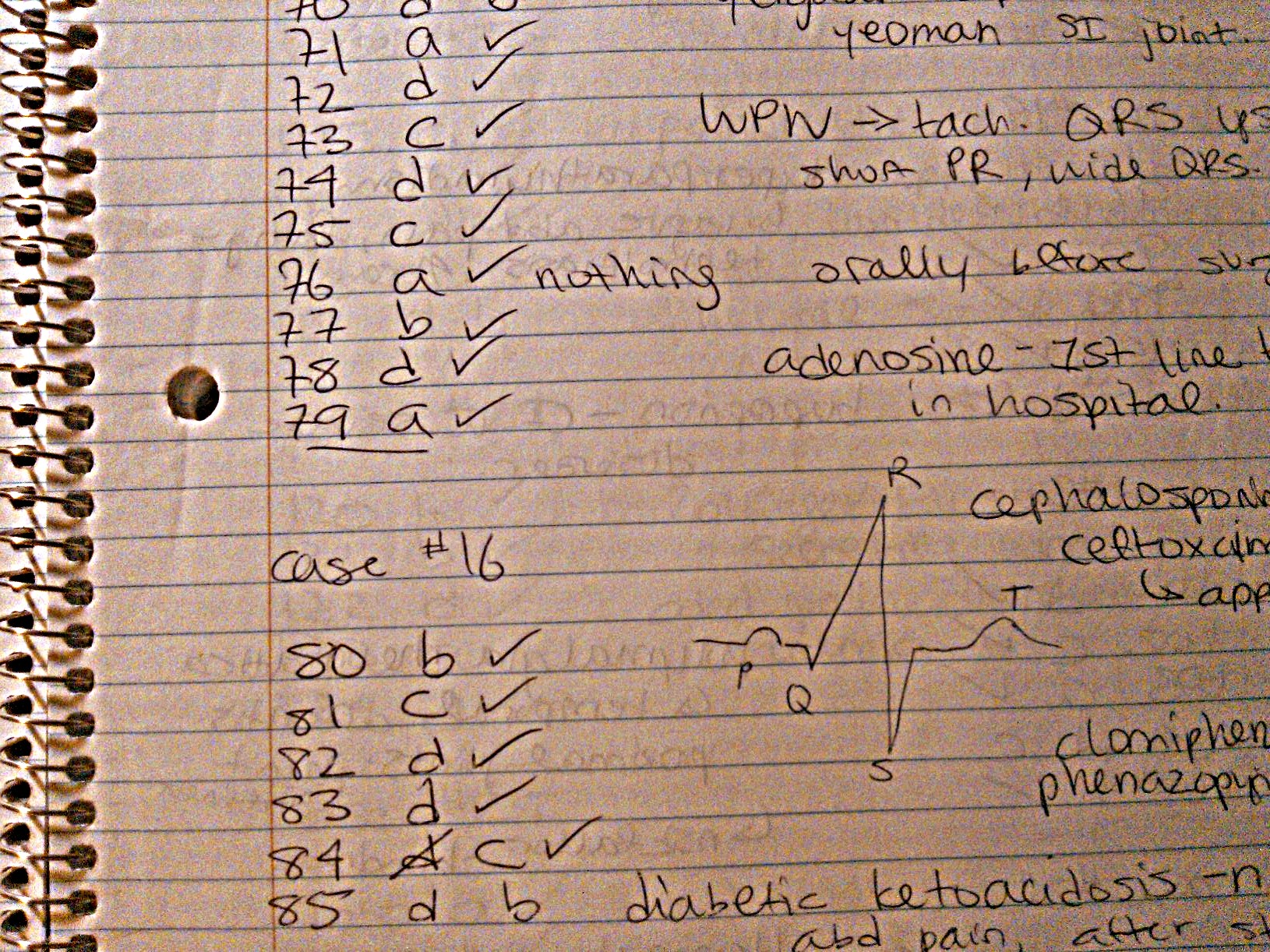
by Dr. Talia Marcheggiani, ND | Jul 24, 2014 | Canadian College of Naturopathic Medicine, Exams, NPLEX, Robert Schad Naturopathic Clinic, Writing

Nalexone or naproxen: one’s an NSAID. After a month, they’re not straight in my head.
Porphyria is different from diphtheria. Now who can remember which diagnostic criteria includes
Left shifts? Or is it left shunts? And what’s that condition where the intestinal villi blunt?
Emergent conditions and therapeutic nutrition leave little room for healer intuition. I wish I was dating an
X-ray technician. With less than
2 weeks to go, we’re left counting the hours. It’s been a while since I’ve had a shower. I wonder if there is a botanical flower that will give me superhuman studying power?

by Dr. Talia Marcheggiani, ND | May 6, 2013 | Canadian College of Naturopathic Medicine, Exams, NPLEX, Stress, Student
Congratulations on another completed academic year! Not to rain on everyone’s parade but, for many of you, there is a giant basic sciences board exam looming in the not-so distant future. So, there are websites out there on tips for studying for NPLEX 1, but they are annoyingly vague. I remember looking at said sites, and felt like grabbing whoever put the sites together, taking them by the shoulders and giving them a good shake yelling, “just tell me what to do!” I’m going to try to deliver that. But, I can’t offer any guarantees. Every year, NPLEX is different, with a different random focus. Some years it’s crazy hard, some years CCNM students do really well, other years the questions seem to be obsessed with biochemistry. I can only be candid about my own study strategy and what worked for me, attaching real-life experience to the wonders of a standardized board licensing exam.
I don’t know about anyone else, but naturopathic medical school exam schedules have brought out my inner crammer. It’s gotten to the point where I can’t study for anything unless I know that there is a final the next day. And even then… So, when faced with the prospect of 3 months to study for 2+ years of cumulative material, I had no idea where to start. I’d never done anything like that before and had no idea how I’d pull it off. Luckily I managed to. Here’s how.
1) Take the month of May off. Work, travel, take an NPLEX course if you think you have to (I didn’t), sit on a patio with a beer every day, or sit in front of your books, twiddling your thumbs wondering how you’re going to work up the courage to do this. Just don’t open those books. Not yet. May is yours. Let the last 2 years ebb and flow in your subconscious mind while you enjoy some nice weather and update the photos of your friends and family so that you have new ones to look at to remind yourself of what their faces look like while you’re in 3rd year and retreat to your secluded ashram of stress. But 3rd year’s not your problem now. It’s only May. And, May, it’s all yours.

2) June 1st, buy your book. That book would be First Aid for the USMLE Step 1. Your new bible, available at the U of T bookstore in the medical section. It costs $48 for the current year’s issue. Friends of mine bought back copies, from as far back as 2009, for around $10. It’s worth it to get a current copy, though, as they tend to correct mistakes or update information (though there’s not a whole lot that changes when it comes to basic pathology). Just so you know, US and Canadian medical school students take a similar exam called Step 1 after their second year. Turns out, NPLEX is so similar that you can just use the med school students’ (much) cheaper study guide, which is also better and has pictures and isn’t impossible to read or full of mistakes like some other NPLEX study books on the market that happen to cost 3x more and are full of awkwardly-worded, impossible-to-understand explanations. I’ll name no names. Just, please, buy First Aid. In fact, watch this video a classmate of mine posted last year if you’re not yet convinced.
[youtube=http://www.youtube.com/watch?v=xkUoU_96KuQ]

Oh, and FYI, you can skip the parts about pharmacology, which is awesome. That’s not ’til NPLEX 2. Oh, and another thing: because I did abysmally poorly in 2nd year microbiology I also bought Clinical Microbiology Made Ridiculously Simple used for $10. Since it seemed that NPLEX 1 was 90% micro, going through that easy-to-read book really paid off. So, you might need more than one book. As naturopathic doctors, we praise individuality.
3) The next 2 weeks serve as your psychological buffer. OK, now that we’re in June, take another 2 weeks off. So far you’ve taken the 4 weeks of May off, now you’re taking the first 2 weeks of June off, you’ve bought your book and you’re ready to go. Most people I’ve talked to advocate studying for NPLEX for a solid 2 months – June and July – however, once June rolled around I was stressing over the fact that I hadn’t started studying, but I still didn’t actually start studying. I believe that, for a test like NPLEX, you really need 2 weeks of a buffer time between your vacation and starting your study schedule. Now, the first 2 weeks of June aren’t really real time off, you’re still occasionally going to the library, freaking out, looking at cheat notes on the Gmail account and watching random Youtube videos about jaundice, you just haven’t started studying yet. And that’s fine. It will come. Fear and motivation are directly correlated.
4) Get grateful. It might seem like NPLEX is a giant pain in the gluteus maximus but, really, think of it as a gift (you might as well, because either way you’re writing it). It’s what separates us from the people who get fake degrees from a back-corner alley and do acupuncture in their basements somewhere. It makes us real professionals. It’s also a great opportunity to learn some of the stuff we’ve crammed through in the past 2 years. And learn it you will.
5) By June 15th, set up your study routine. For me, I knew there was no way I was going to get this thing written if I didn’t have a routine to adhere to. There’s nothing worse than having a vast summer day ahead of you and then realizing it’s 9 pm and you still haven’t taken the plastic wrapper off your new First Aid for the USMLE Step 1. So, my strategy was simple. I got a job. I worked full-time at an English language school teaching ESL from 8 am to around 2 pm near Yonge and Bloor in Toronto. It took me the first few weeks on the job to get used to lesson planning and creating stellar classes. By the time the middle of June rolled around, I had my teaching routine down and therefore my afternoons were free to dedicate to dear old NPLEX 1. Every day I packed my First Aid, gave classes until 2 pm, organized things for the next day’s class and then headed first to Starbucks to unwind with a coffee and a granola bar, and then to the Toronto Reference Library where I studied until around 6 pm. Then I’d go home, eat and keep the evening for myself. The job not only puffed up my bank account, it helped keep me regular. (Part of that might also be thanks to the daily Starbucks).
6) 4 hours a day is all it takes. Absolutely everyone you talk to about NPLEX will tell you, with doe-eyed honesty, “treat studying for NPLEX like a full-time job. Study 8 hours a day and take frequent study breaks. Then leave your evenings and weekends free.” As Nonna would say, “Bully-shit.” I don’t know anyone who spent 8 hours a day studying for NPLEX. 4 hours a day is the threshold amount of time that anyone can spend reviewing things. It’s probably a scientific fact. I spent a consistent 4 hours a day with my First Aid for Step 1 book. And, when it got closer to the actual test, I studied on weekends. It just happens that way.
7) Now, do your thing. When I study, I need to take notes to kinesthetically implant the knowledge in my brain. For some people, it’s flashcards. Others make flow charts and still others have photographic memories. But, those people probably aren’t reading this post, so, who gives a care. This is the part where your individuality can shine. Using The Book as a guideline, make your notes and do whatever you need to do to make sure the magic Book’s information somehow gets into your brain. Starbucks coffee usually helps with this. Make sure you have ample supply.

8) 1 to 2 weeks before the exam, start doing practice tests. At the Toronto Reference Library I found an amazing Kaplan USMLE Step 1 practice test book from a few years back. I checked it out of the library and worked my way through the book’s practice quizzes. There are other versions of these books, one even made by First Aid, available online as well (the Gmail account has a copy). The tests are incredibly hard, but nicely explain to you why you failed each question and why the right answer is righter than the one you dim-wittedly picked. It’s much appreciated. I consistently, up until we wrote NPLEX, scored about 40% on those tests. I did, however, do much better than 40% on NPLEX, so fear not. Aim for the moon, and fall among the passing.
9) Take the weekend before NPLEX off. Don’t study the weekend before NPLEX. I never used to believe this piece of advice before because, as I mentioned, I am used to racing through the course material the night before a final. This actually is impossible to do with NPLEX. There’s too much. I learned that, because this isn’t a cramming exam, but a long-term memory thing, it’s better to allow your brain some time to do its neuroplasticity dance. Eat fatty fish at every meal, try to abstain from excessive alcohol or gluten if you’re sensitive. Exercise. Try not to freak out.
10) Write NPLEX. Bring the things NABNE tells you to bring. There’s a list somewhere. Wear comfortable clothes. Bring layers, bring water. Bring some naturopathic performance-enhancers: examples of uppers are gingko extract, rodiola and the ginsengs, and downers are Neuropas, Rescue Remedy, GABA, nervines, etc. Create your cocktail, give it a test-drive before exam day and then, on your big day, put it into action. While waiting to write the test, try not to talk to too many people. Never discuss things you’ve studied, don’t talk about exam questions. And just go for it. Bring an Advil too. I had a terrible headache the day of, as I usually get when I reintroduce CCNM after a period of elimination.
11) After NPLEX, take time off. You’ll need to. Not to be a fear monger, but 3rd year is a living hell. The only good thing about 3rd year as a naturopathic medical student is that it’s over before you know it. In May you simply emerge from a brief intense stay in your cave of stress and wonder where all your loved ones have gone. They might have given up on you, but it’s important to remain optimistic. In 4th year, I’ve heard there will be more time to win back their affection again. That being said, right after NPLEX, before 3rd year starts, take some time off, spend it with friends, family, hobbies, travel and live your life. Because for the next 8 months, you won’t have one.
Happy Studying!
Related articles:
NPLEX 1:
Another Failed Attempt at Studying for NPLEX 1
7 Reasons Why Summer Studying Doesn’t Have to Suck
NPLEX 2:
10 Tips for a Vibrant NPLExperience!
Ode to NPLEX 2: An acrostic poem
Resources:
Pass NPLEX Site
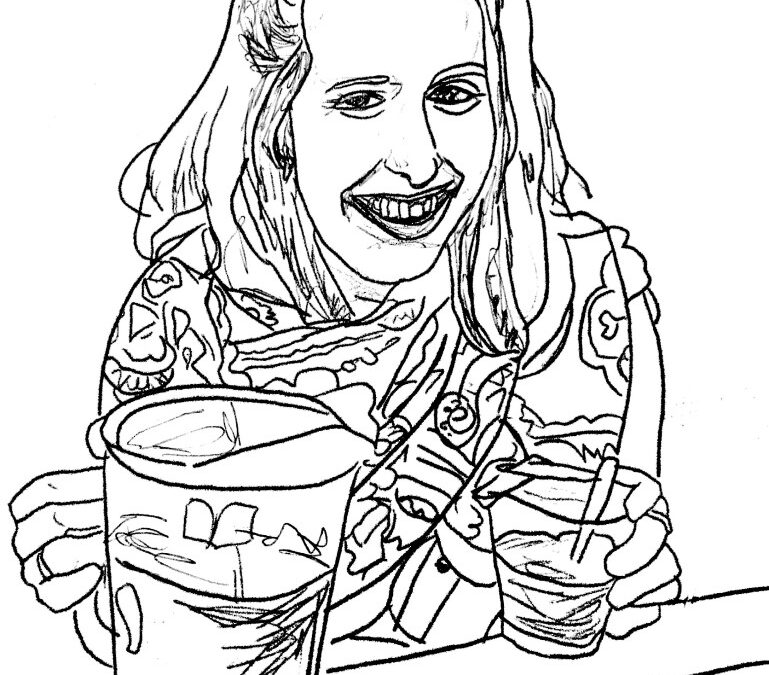
by Dr. Talia Marcheggiani, ND | Aug 13, 2012 | Art, Art Therapy, Beauty, Body Image, Colour, Creativity, Culture, Finding yourself, Mental Health, Mindfulness, NPLEX, Self-esteem, Self-reflection, Toronto, Writing
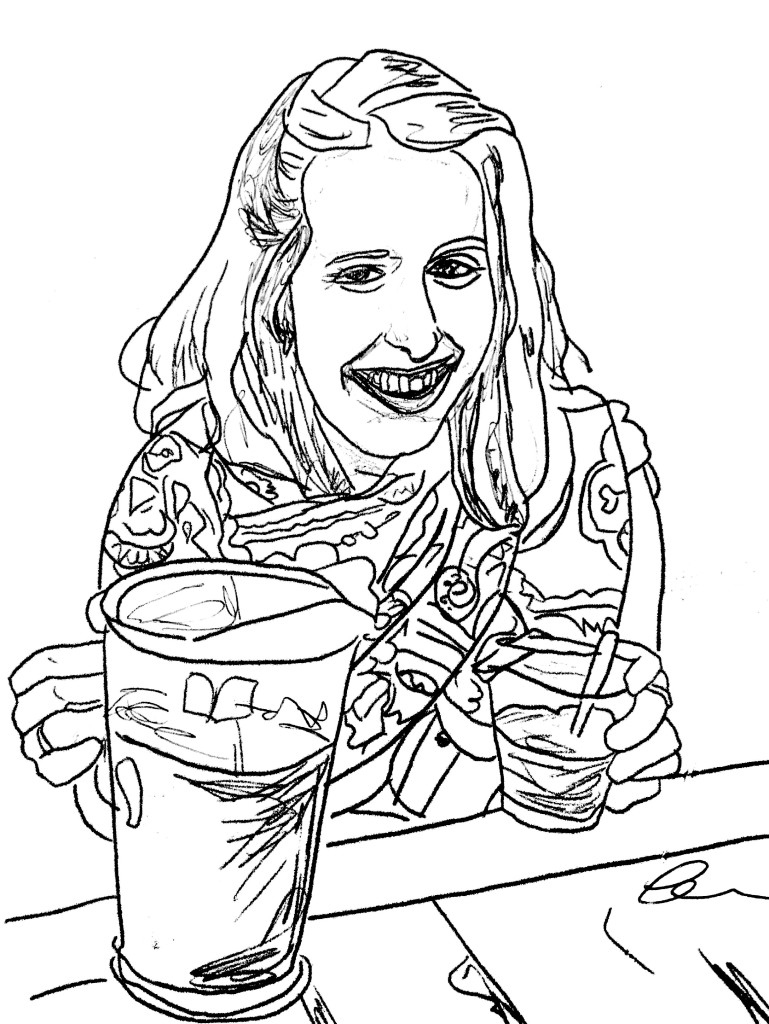 My art is mainly inspired by nature or by places I’ve traveled to or read about. It doesn’t tend to emphasize detail and, when humans are included in the composition, they are usually faceless, depicted as chunky, cubist blocks of colour. People are rarely the main subject of my paintings. And, unlike Frida Kahlo, one of my painting idols, I have never entered the world of portrait painting, much less self-portrait painting.
My art is mainly inspired by nature or by places I’ve traveled to or read about. It doesn’t tend to emphasize detail and, when humans are included in the composition, they are usually faceless, depicted as chunky, cubist blocks of colour. People are rarely the main subject of my paintings. And, unlike Frida Kahlo, one of my painting idols, I have never entered the world of portrait painting, much less self-portrait painting.
When painting the facial features of other people, one must pay obsessive attention to detail. This is a skill I don’t have when it comes to painting. It’s almost as if, through painting, I can leave the burden of fussing over details behind to pursue a sense of therapeutic self-pleasing aesthetic that focuses on colour and shape, rather than the fine lines and subtleties. I tend to spend far too much time obsessing over details in real life and so I view painting as an escape from that. When painting life-like portraits, however, such an escape is impossible.
But, like Picasso, I want to become an artist-of-all-trades or, at the very least, claim experience with different subject matter. So, besides feeling that the experience would be tedious and slightly narcissistic, I decided to attempt a self-portrait.
The thing about self-portraits is that we know our own faces very well. From my teenage years through young adulthood I remember countless hours spent obsessing over my reflection: squeezing zits, plucking eyebrows, willing my nose to shrink and wondering what made my face less poetic than that of a famous actress or singer, almost like there was a secret beauty ingredient I might have been born lacking. Painting a self-portrait demands an attention to detail unlike any other mirror flirtation ever performed. From the exact shape of the mouth, to the way the cheeks are outlined, I found myself staring at parts of my reflection that I had never experienced before.
Because I’m not experienced in portrait-painting, the painting started out rough. My oil-painted face was taking on a deformed, misshapen quality, it didn’t look like me, and I found myself criticizing the painting, judging it, and then my own abilities. I then realized, painfully, that this was akin to the way I would criticize my real-life reflection. After a while, though, I found myself comforted by my outline’s familiarity and that comfort turned into a sort of visual satisfaction. This was my face: the window to the person I am who lies beneath and the signature that accompanies everything I say or do in this life. I began to make peace.
Creating art allows us lots of space for reflection. Perhaps that’s why it’s so therapeutic. As I mix colours and apply paint to canvas my mind relaxes and wanders, uninhibited, into new terrain. I find that while painting it helps to have a notebook handy because one artistic pursuit nurtures another and I find myself inspired to not only paint, but write as well. On this portrait-painting day in particular, I felt a relaxing space open up for reflection on who I am now, at 26 years of age. My reflection may have changed some, but behind the wide gaze, I could still see the smirk of that 9-year old, in the Universal Studios sweatshirt, who was imaginative, idealistic and shit-disturbing, all at once. I wonder if this 9-year-old knew that in a few years’ time she would be studying something called naturopathic medicine.
This summer has been dedicated to reviewing basic medical sciences for NPLEX and working as an English as a Second Language (ESL) teacher in Toronto. I haven’t made much time for long contemplative walks, reading literature, laying on the grass, socializing or, most of all, painting or drawing. The way I structure my day is a reflection of my disbalance, not my actual interests and priorities and, as I paint, my evolving painted self stares back at me from it’s canvas home and asks me, “is this what you wanted?”
I’m not sure. But portrait painting shows me that there is a link between borderline narcissism and self-contemplation. Maybe that’s why it’s called self-reflection.
by Dr. Talia Marcheggiani, ND | Aug 3, 2012 | Book, Canadian College of Naturopathic Medicine, Culture, Docere, Education, Exams, Gratitude, Mental Health, Motivation, NPLEX, Stress, Student, Summer, Toronto, Urban Living
It occurred to me during a lazy, yet productive, day at the Toronto Reference Library, among stacks of deliciously old-smelling books – this ain’t so bad. Although I’ve taken to whining about it in previous posts, summer studying doesn’t really have to be that terrible. Here are 7 ways to find beauty in sacrificing some our best months of the year for the sake of education:
(more…)
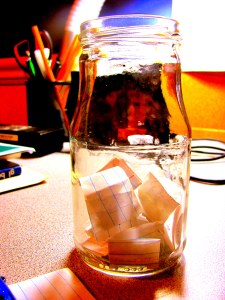
by Dr. Talia Marcheggiani, ND | Jul 23, 2012 | Art Therapy, Balance, Education, Exams, Letting Go, Mental Health, Mindfulness, Motivation, NPLEX, Philosophy, Photography, Preventive Medicine, Stress, Student, Summer, Writing
 Like many of my peers I feel like I spend every day eating lunch at the Mandarin buffet – I always seem to have too much on my plate.
Like many of my peers I feel like I spend every day eating lunch at the Mandarin buffet – I always seem to have too much on my plate.
(more…)
by Dr. Talia Marcheggiani, ND | Jul 16, 2012 | Canadian College of Naturopathic Medicine, Clinic, Creativity, Docere, Education, Exams, Motivation, Naturopathic Principles, NPLEX, Philosophy, Professional Development, Student, Teaching English as a Foreign Language
As a summer English as a Second Langauge (ESL) teacher I often attend teacher training workshops. In a recent training session I attended, a grammar workshop, it was impressed upon us the importance of creating a learning environment in which we allow students to experience the language rule for themselves, rather than simply standing at the blackboard, teaching it to them.
(more…)
by Dr. Talia Marcheggiani, ND | Jun 25, 2012 | Exams, Humour, Mental Health, Mindfulness, Motivation, NPLEX, Student, Summer, Toronto, Writing
Yonge and Bloor, downtown Toronto, Canada at approximately 2:00 pm. Thursday, June 21. I finish teaching ESL for the day and enter the Toronto Reference Library, a $5 Starbucks strawberry banana whey protein smoothie in hand, sunglasses resting on the top of my head and my First Aid for the USMLE Step 1 tucked under my arm. NPLEX 1 is in t-minus 45 days. Here we go…
(more…)













